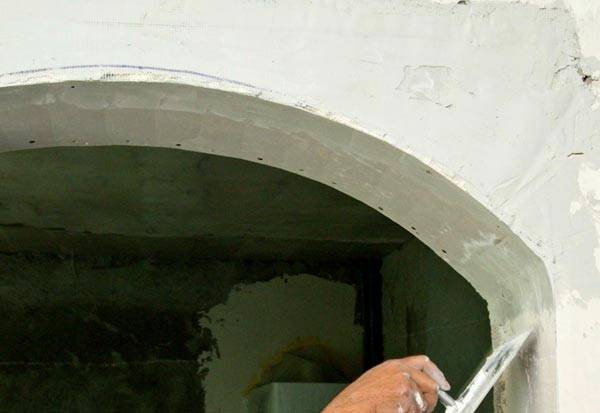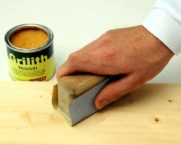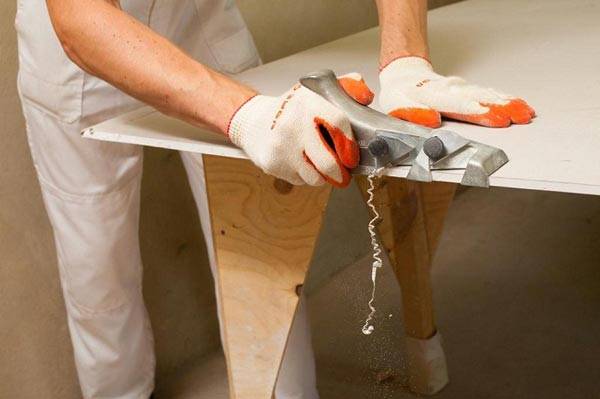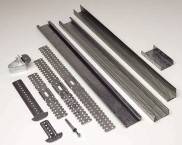Plaster and putty - what's the difference?
HDespite the similar application technique and composition of materials, plaster and putty are fundamentally different types of finishes that solve different problems. Craftsmen know that plastering is a much more laborious process than putty, and it is much more difficult to perform a high-quality work in the first case. Plaster and putty, what is the difference and common features, in which cases they should be used depends on many factors.
The content of the article
Types of materials
To create a finishing layer, special mixtures are applied to the base, which consist of a binder, water and fillers. All binders have a common property - they form a stable bond with water molecules, transforming from amorphous mixtures into solids. The strength of the layer also depends on the size of the filler particles, the smaller they are, the less load the layer can withstand. The difference between plaster and putty lies precisely in the different compositions. The most common binders are:
- cement is waterproof, has the highest strength, is chemically active, therefore it is used only for outdoor work;
- silicates - substances that enter into a chemical reaction with the base surface, form extremely strong layers and are used only outside;
- gypsum and alabaster - safe and environmentally friendly binders, not resistant to water;
- acrylic - polymer, allows you to create very thin, smooth, "mirror" layers;
- latex is a plastic polymer, resistant to water, hardens quickly, can be used inside and outside, safe and non-toxic.
Plaster mixes
The plaster is highly durable, so a large filler and a strong binder are used for its manufacture. The main purpose of any plaster mixture is to level the surface and create a protective layer when it comes to external finishing. In many ready-made compositions, additives are added to give a decorative effect, but the main purpose still remains purely technological.
There are waterproof and frost-resistant mixtures for outdoor use, based on cement or silicates. For premises, you can use gypsum mixtures and polymer-based plasters, as they are easier to apply and harden faster. Decorative additives are added to all types of mixtures, with the help of such plaster you can create textures with the effect of natural stone, wood, aged surfaces and many others.
Putty mixtures
Despite the fact that the materials are similar in composition - plaster and putty, what is the difference in the size of the filler particles, in the second they are several times smaller, which is why the mixture is very plastic. Like plaster, putty can be sold as a ready-mix or as a dry powder that can be mixed with water. All dry mixes are made on a gypsum basis, therefore they are afraid of water and can only be used in dry rooms. It is important to remember that dry mixes, even when packed, must be protected from moisture. If lumps appear in the bag with putty, they need to be sieved and thrown away, they should not get into the finished mixture, since they have already lost their binding properties.
Ready-made compositions are made on the basis of polymers - acrylic, latex and polyvinyl acetate. Such mixtures can be stored for up to two years, if air access to them is limited, they will remain plastic. Ready putties are thick enough, which is convenient for applying the first layer, but not suitable for finishing stages. All polymer compositions are perfectly diluted with water, therefore, to give the desired consistency, you need to add a small amount of liquid. Water does not affect the strength of the finished layer in any way.
Areas of use
Plaster is irreplaceable in the following cases:
- creating a protective layer when facade finishing or wet rooms;
- leveling surfaces with severe defects;
- creating a durable decorative layer;
- sealing large cracks and technological seams;
- finishing decorative finishing.
The putty is ideal for the following types of finishing work:
- creating perfectly flat surfaces that serve as the basis for wallpaper or painting;
- correction of small surface defects;
- sealing shallow seams, cracks, holes;
- decorative work, creation of textured surfaces in rooms.
Examples of using
The difference between plaster and putty can be appreciated if you study the areas of application of these compounds. Before using the mixture, you must read the manufacturer's instructions and prepare the composition for work: seal with water in the right proportion. The surface also needs to be pre-treated with a primer. This is necessary to remove dust that interferes with adhesion and reduces the quality of the finished layer.
Alignment
Alignment is almost always required, and in the case of a construction defect, plaster is indispensable. Cement-based plaster with the addition of large particles is applied along the beacons, and the thicker the layer, the larger the filler should be. With the help of an aluminum rule, the layer is pulled from the bottom up. The putty is not intended for this type of work.
Restoration
Surfaces with serious defects such as chips, gouges and channels can be repaired with cement plaster. The composition on such a binder is ideal for both concrete walls and brick ones.The cement plaster, which will be used for restoration work, must have a strength grade of at least M150, then the section of the repaired wall can be fully used. If the chips are not large and their depth does not exceed 2 cm, a putty can be used for restoration purposes.
Finishing
Finishing is called finishing because it completes the cycle of construction work, and only decorative layers - wallpaper, paint, cladding. The finish layer must be perfectly even and have sufficient strength. If the surface is tiled ceramic tiles or any other material, plaster should act as a base. Under wallpaper or painting is quite suitable putty.
Decorative surfaces
Plaster and textured putty - what is the difference in the case of decorative finishes? With the help of the first, decorative effects are created outside the building, and putty mixtures are used for premises.
We select the ideal option
To choose the ideal plaster or putty, you need to answer three questions:
- where the finished layer will be used;
- what external influences it will be exposed to;
- what is the nature of the surface.
Based on these three characteristics, it will not be difficult to choose the right composition. To help a novice builder - this video:
Video: application of plaster and putty
























